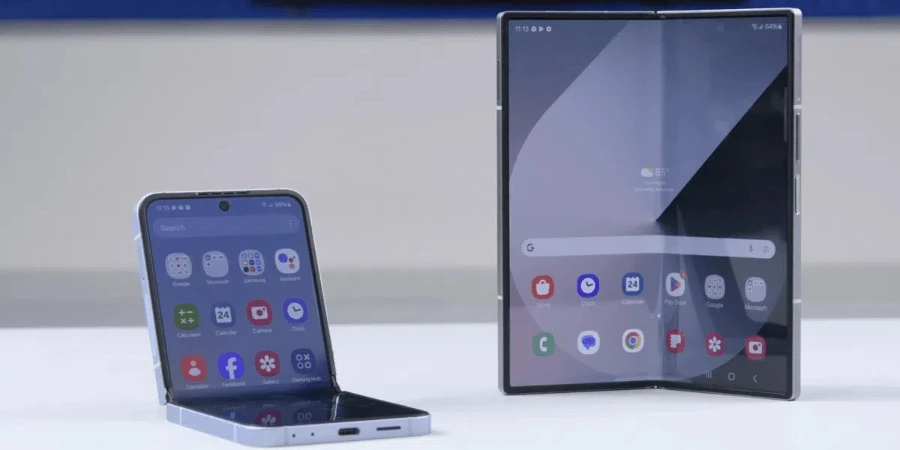Samsung released two new generations of foldable screens in July 2024: the Samsung Z Fold 6 and Z Flip 6. As the low-key boss in the Android camp, their product strength and upgrade efforts have attracted much attention. The global professional disassembly giant iFixit also didn’t plan to let them off the hook.

Samsung Z Flip 6 Teardown
The first to be placed on the “operating table” was the Samsung Z Flip 6. Since there are no flex cables on the back cover of the lower half, it can be directly removed using a suction cup and pry tool. An entire wireless charging coil for 15W charging occupies the first layer of the lower back, with a clear cable connecting to the battery below.

After removing the bottom cover, the speaker module is revealed, with a flex cable connecting the speaker module to the upper half.
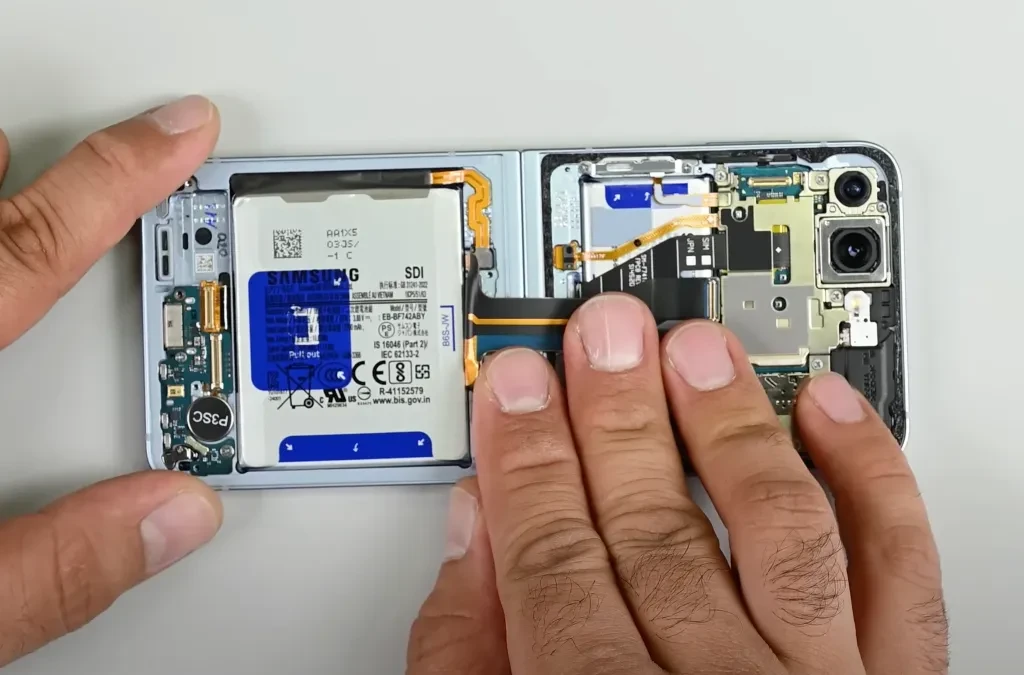
While removing the battery, it’s clear that this is a 2870mAh battery. Based on the Samsung Z Flip 6 release information, there should be another 1130mAh battery in the upper half.
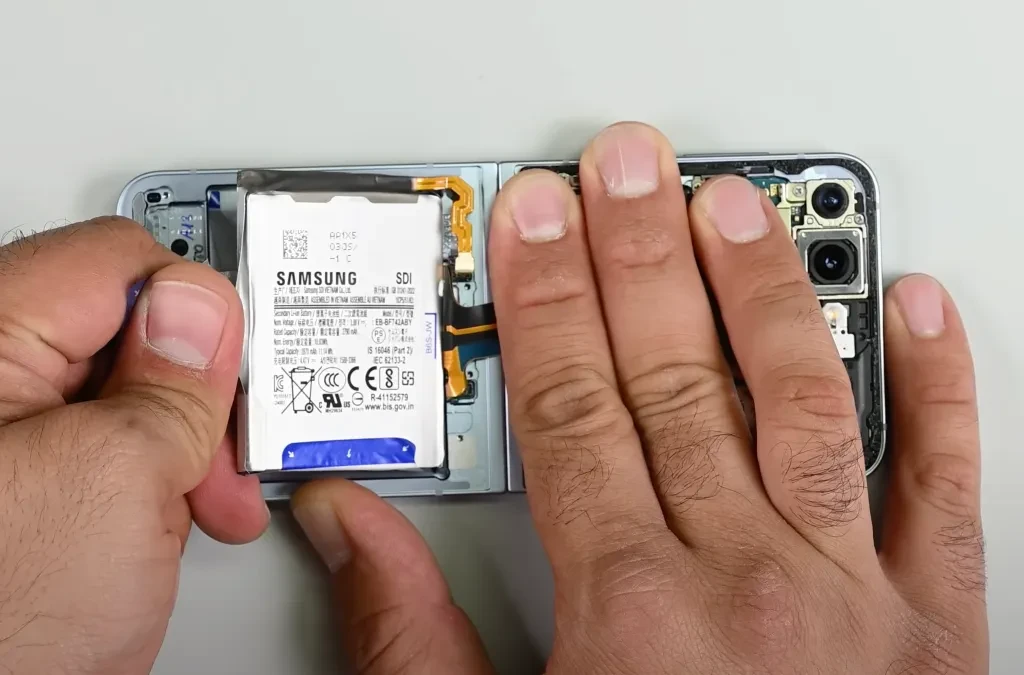
The structure of the lower half is completely disassembled, with one battery, one layer of wireless charging coil, and the speaker module occupying all the space in the lower half of the phone. The upper half contains more components and structures.
The back cover of the upper half is connected to the body with a flex cable, which is responsible for transmitting display signals for the external small screen and needs to be handled more carefully.
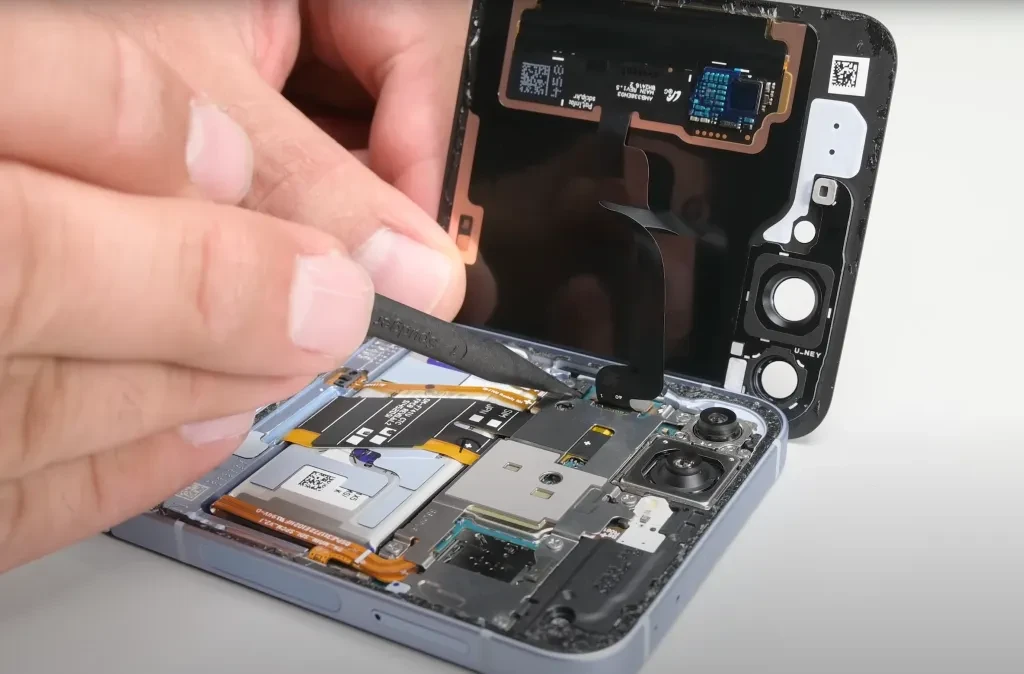
After removing the flex cable, the entire internal structure of the upper half is clearly visible: The top part is the 50MP wide-angle main camera that was just updated in the Samsung Z Flip 6, supporting lossless 2x zoom to make up for the lack of a telephoto lens. Next to it is the unchanged 12MP ultra-wide-angle lens, along with an LED flash. The rest are various components covered by metal cover plates.
The bottom part is the remaining 1130mAh battery mentioned earlier. The two batteries together provide the Samsung Z Flip 6 with a rated capacity of 4000mAh, an increase of 300mAh compared to the previous generation.
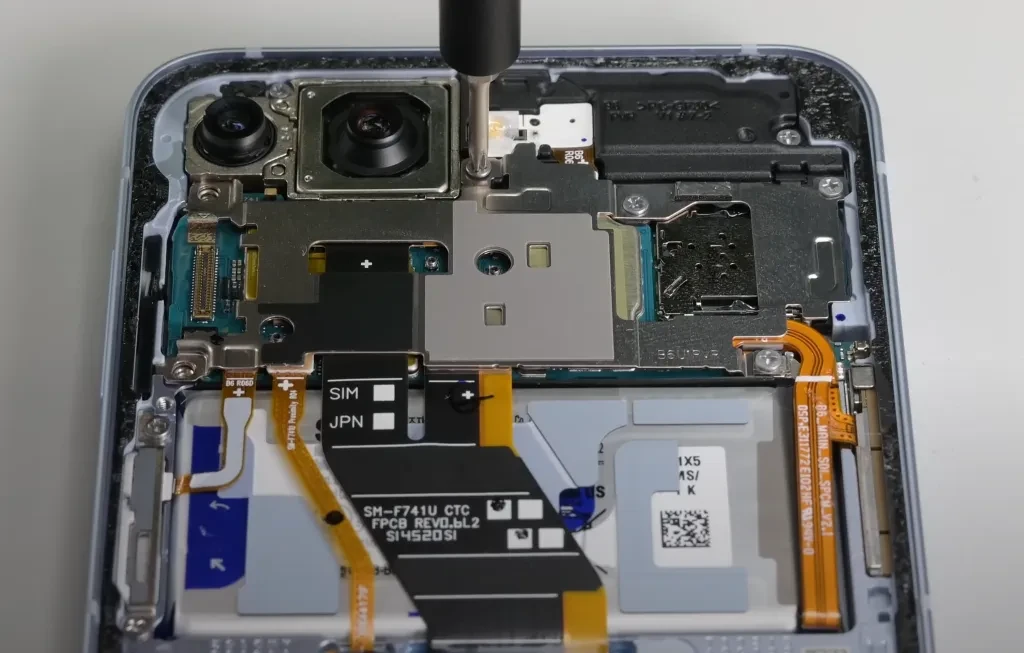
After removing the metal cover plate, the main board is exposed, with flex cables distributed around it, connecting to the physical buttons on the left and right sides of the phone, cameras, two batteries, and speaker.
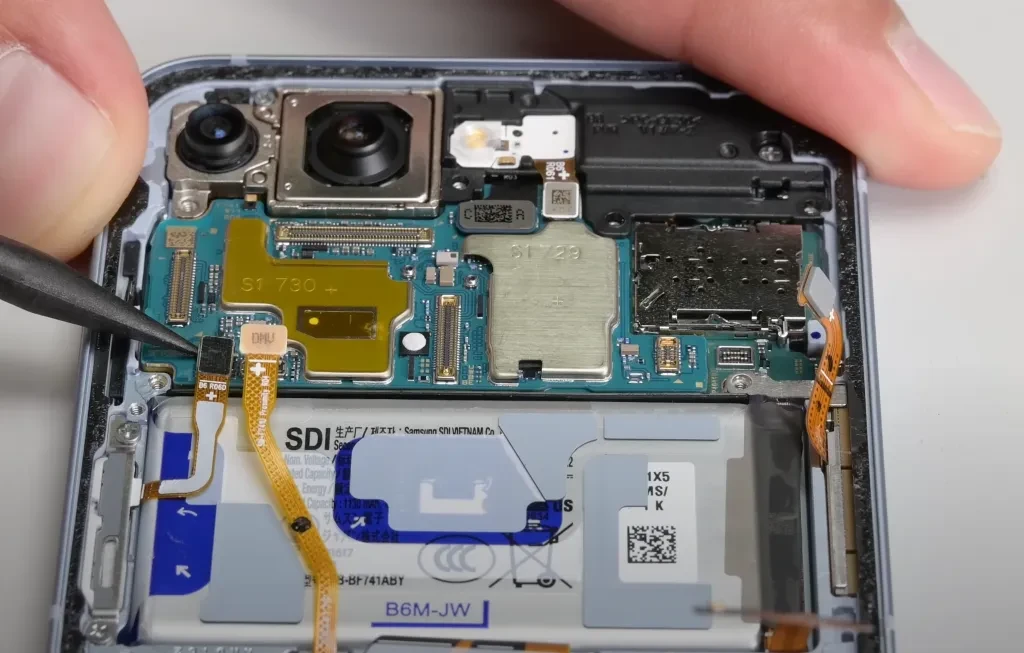
After removing the rectangular battery from the upper half and placing it together with the more square-shaped battery from the lower half, it confirms the previous description.
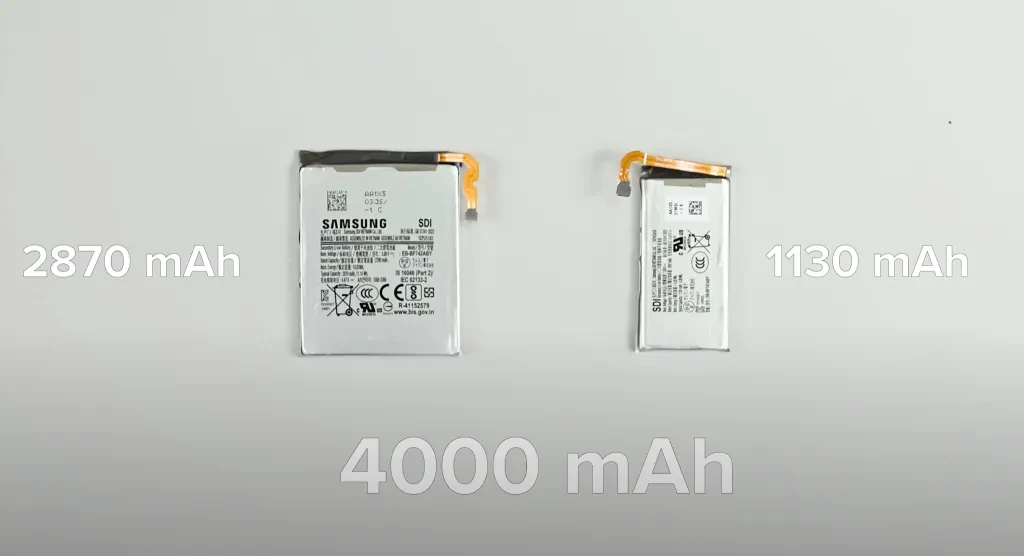
The back shell has been completely disassembled, and it’s time for the 6.7-inch Dynamic AMOLED 2X display on the front. After removing the display, the folding structure of the Samsung Z Flip 6 can be clearly seen.
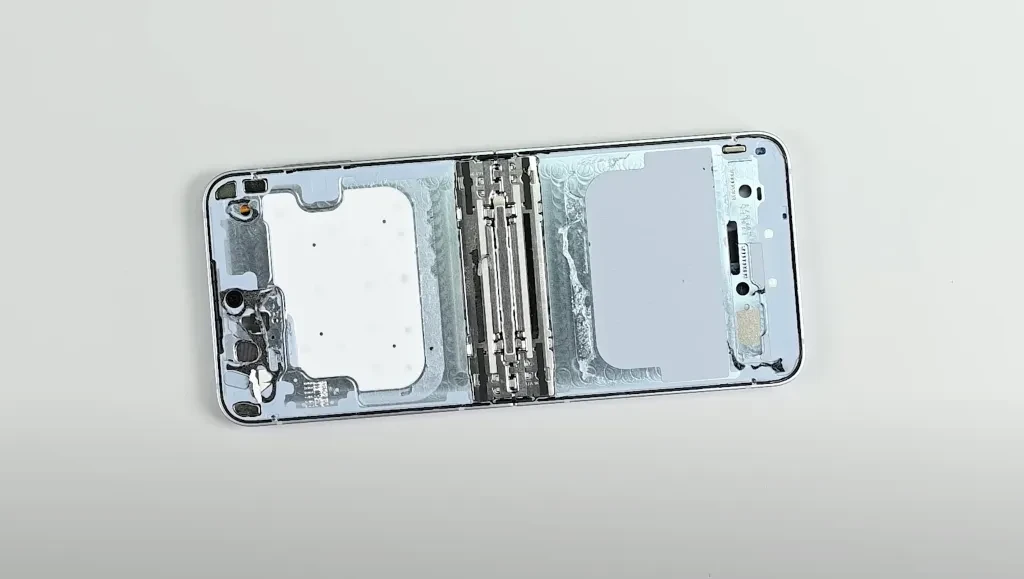
After completing the entire disassembly of the Samsung Z Flip 6, iFixit joked:
What you’re watching now is a replay of last year’s Flip 5 disassembly.
Indeed, apart from a slight increase in battery capacity, the phone structure and components of the Samsung Z Flip 6 do not have obvious differences compared to the Samsung Z Flip 5.
Samsung Z Fold 6 Teardown
As the Samsung Z Fold 6 is placed on the heat plate, the disassembly of this “big folder” officially begins.
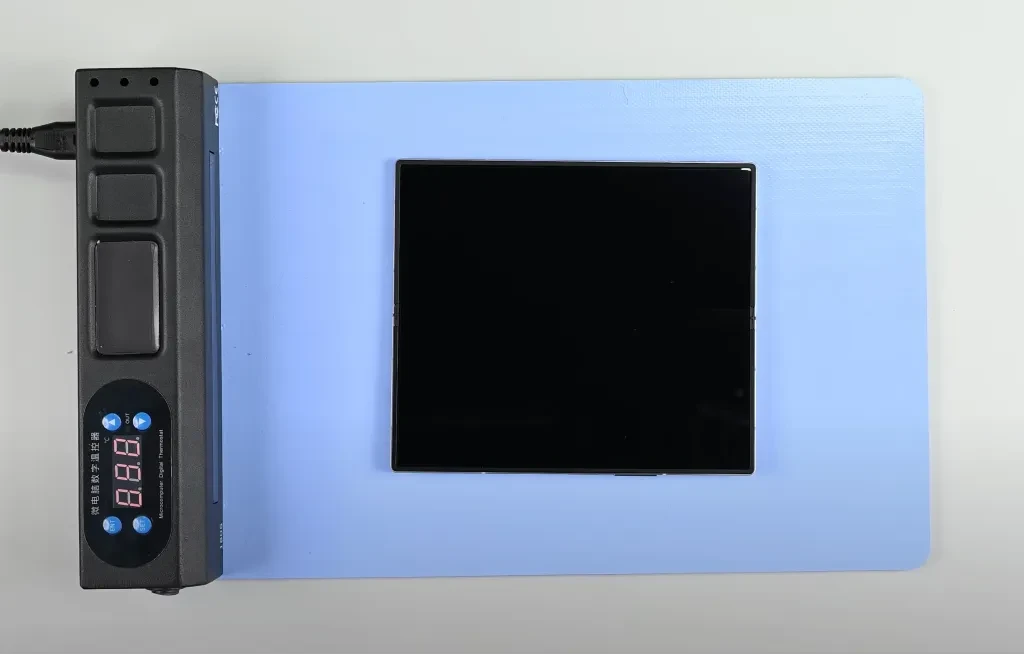
iFixit removed the outer screen and camera back cover all at once—planning to directly disassemble the back of the phone when unfolded.
On the back of the camera side of the phone, we can see the familiar wireless charging coil covering the entire back except for the camera module; there is a rectangular battery on each side.
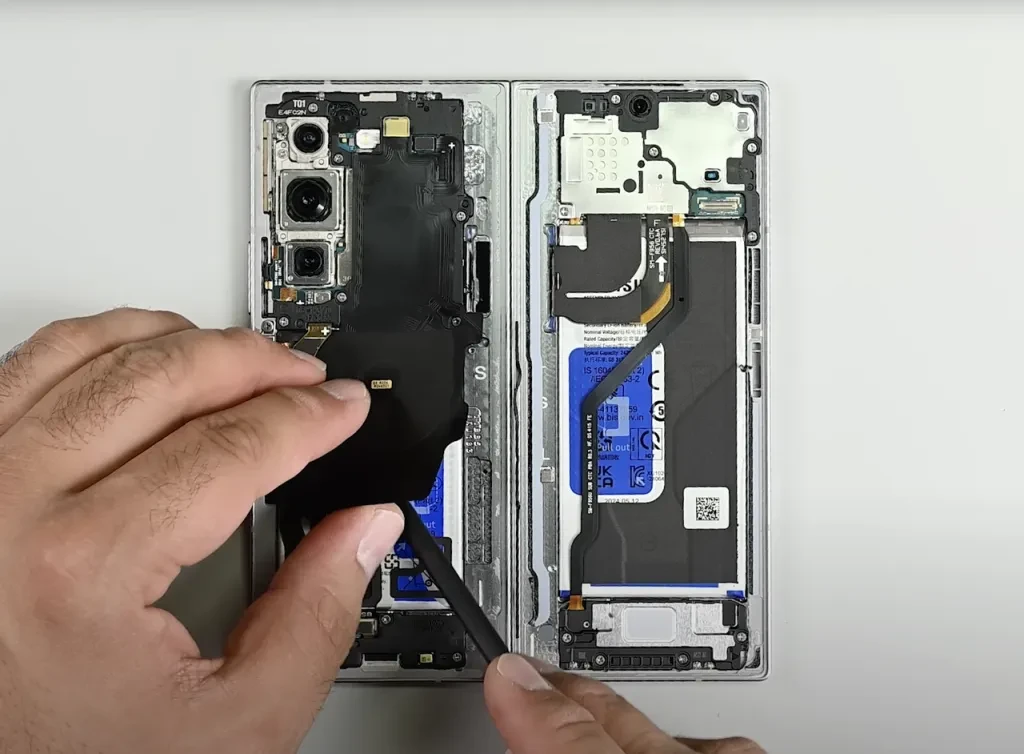
After disconnecting all the flex cables, iFixit quickly removed all the metal shielding and batteries, revealing the Samsung Z Fold 6 without any cover. It’s worth mentioning that Samsung equipped the battery on the camera side with a huge copper heat spreader. From the component density, it can be seen that the left side will undertake more phone operation tasks.
The hinge structure is not obvious on this side. The huge camera module on the left side of the image includes a 12MP ultra-wide-angle camera, a 50MP wide-angle main camera, and a 10MP telephoto camera from top to bottom. On the right side is the 10MP front camera for the external hole-punch screen.
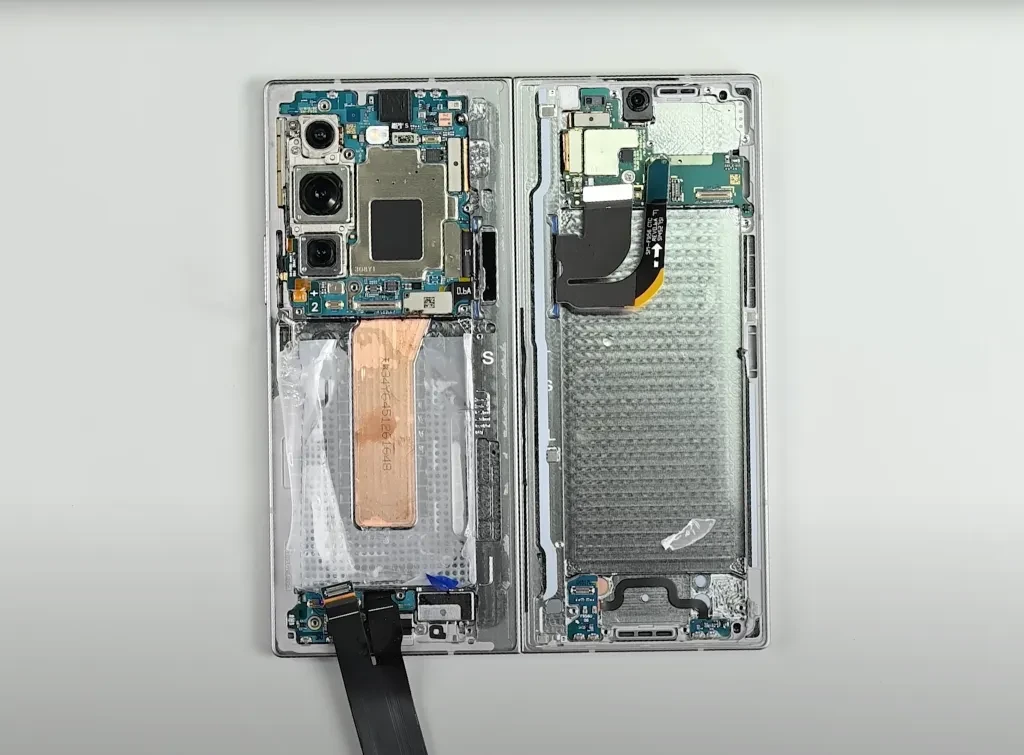
The two batteries together provide the Samsung Z Fold 6 with a battery capacity of 4400mAh, which is no improvement compared to the Samsung Z Fold 5—perhaps due to structural limitations, Samsung believes this is currently the best integration method.
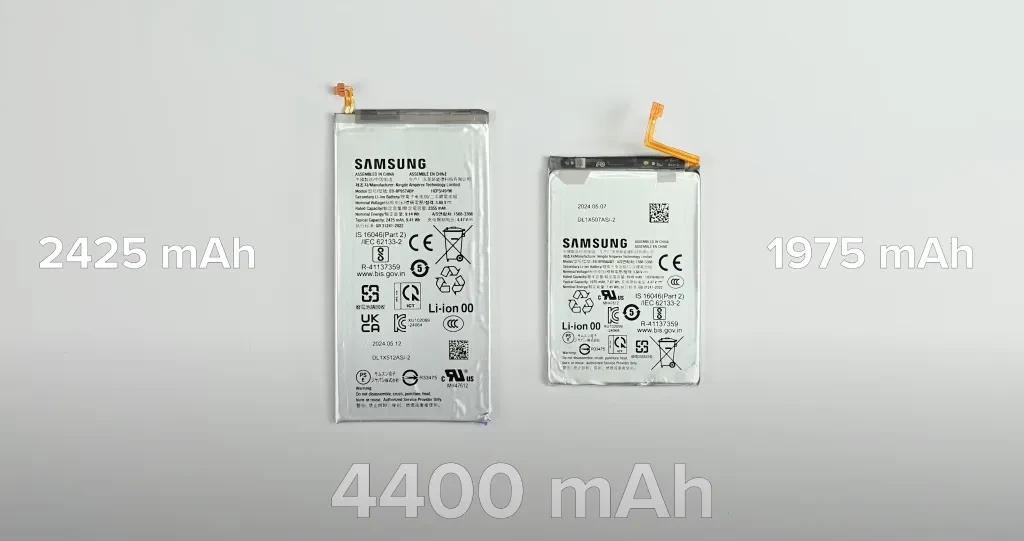
After removing all the main boards and components, only the clean metal frame and a few irremovable parts remain. iFixit placed it on the heat plate again, this time to remove the entire screen when unfolded.
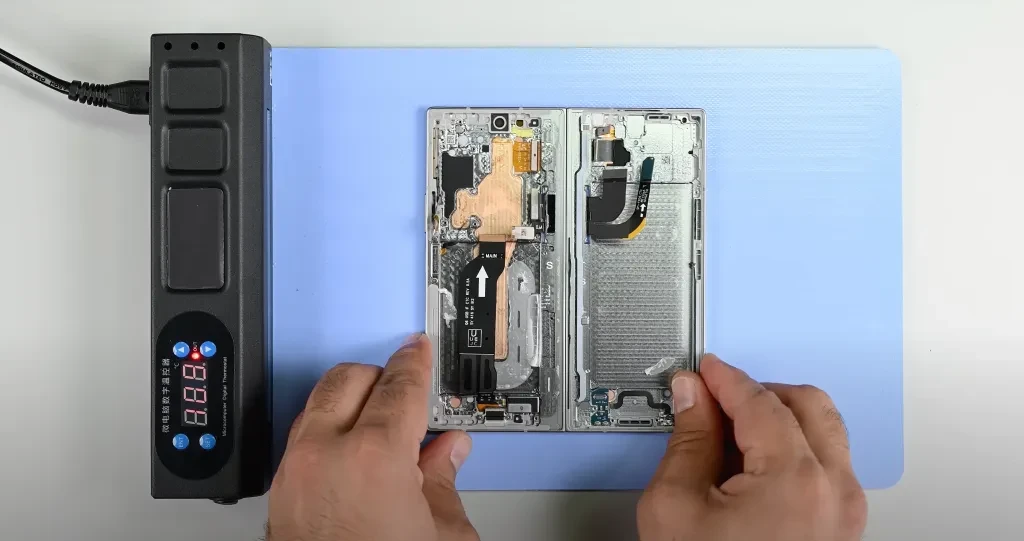
After removing the bezel and the thin adhesive underneath by the same staps, only the clean metal structure of the phone remains. At this point, the hinge details can be seen.
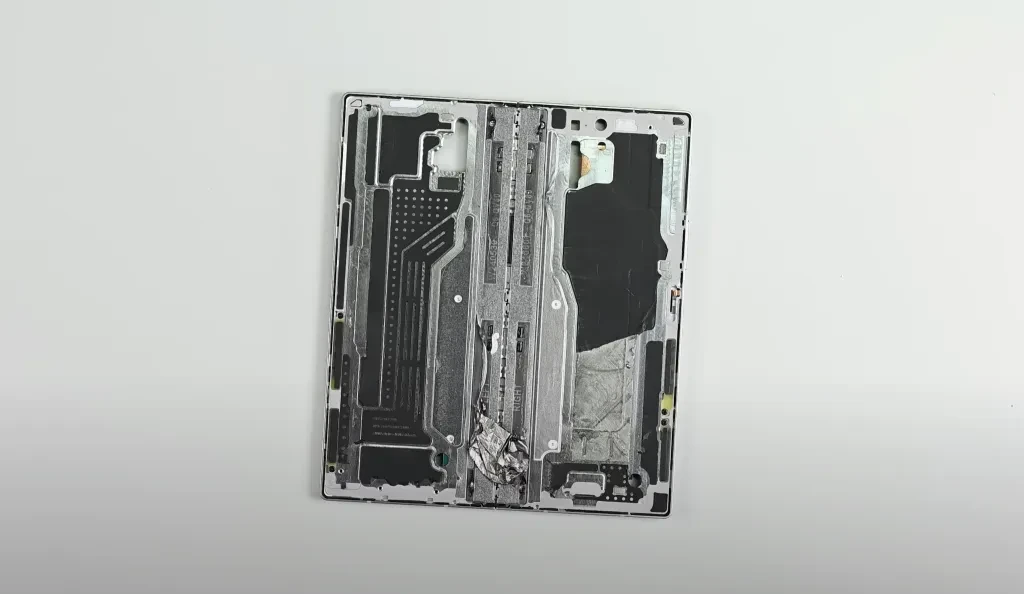
With this, the disassembly of both Samsung Z series foldable screens is complete.
After the disassembly, iFixit reiterated this point: The Samsung Z Fold 6 and Samsung Z Flip 6 are both good, but not at all refreshing. This generation of foldable screens is generally no different from the previous generation, and they will be a bit difficult to repair.
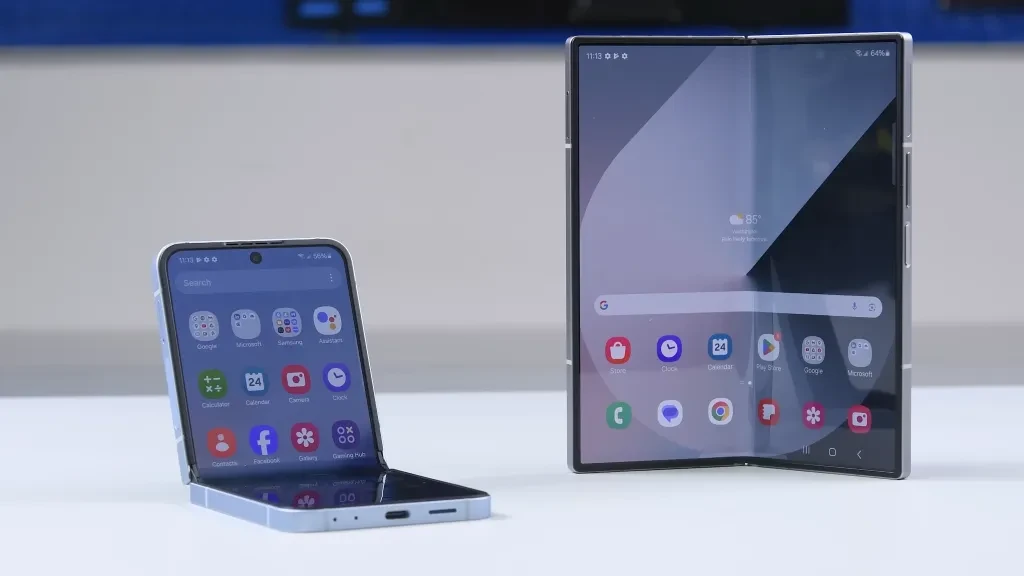
Samsung claims that the foldable screen can withstand 200,000 fold operations (if folded a hundred times a day, this can last about five years), but iFixit believes that within the 200,000 folds or five-year lifespan of the foldable screen, there are still many examples of screen damage or breakage. Repairing it is indeed a high-risk, time-consuming, and labor-intensive matter.
iFixit hopes to see Samsung do better in foldable screen performance and provide a reliable repair plan that can be replicated.
Source from ifanr
Disclaimer: The information set forth above is provided by ifanr.com, independently of Alibaba.com. Alibaba.com makes no representation and warranties as to the quality and reliability of the seller and products. Alibaba.com expressly disclaims any liability for breaches pertaining to the copyright of content.
